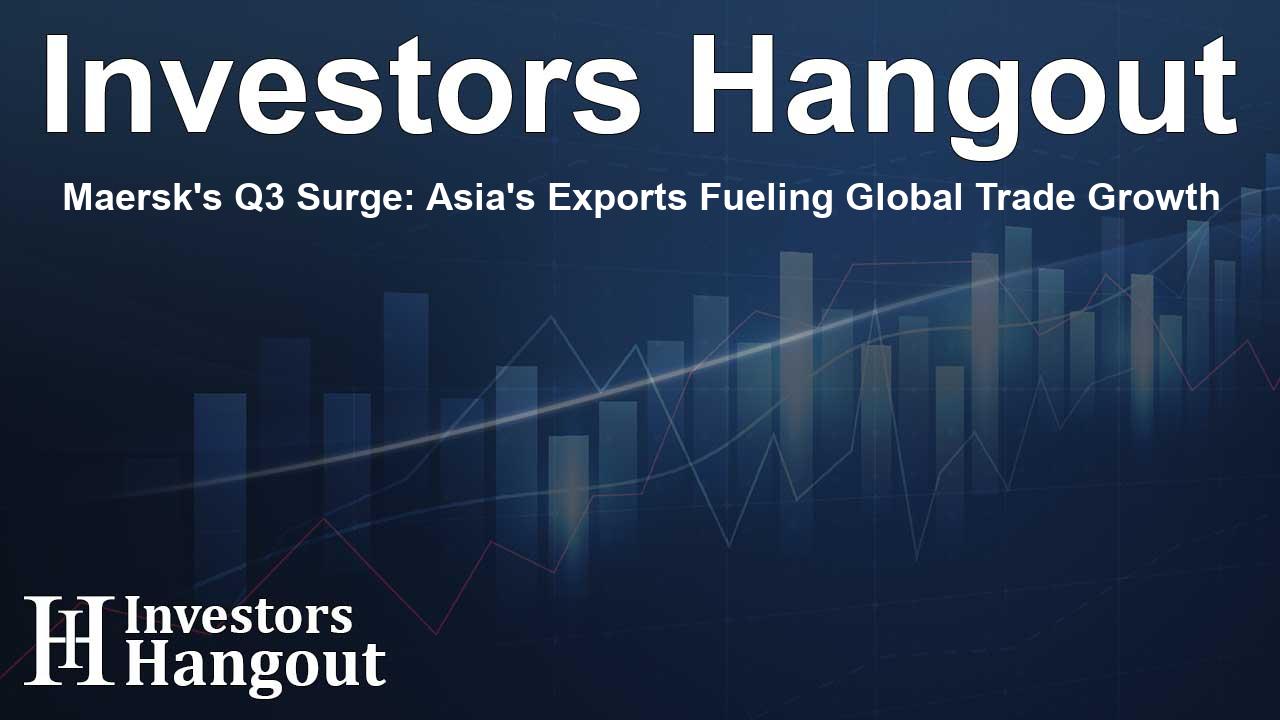Maersk's Q3 Surge: Asia's Exports Fueling Global Trade Growth

Strong Demand in Maersk's Q3 Performance
Shipping giant Maersk recently reported a notable surge in demand during the third quarter, primarily fueled by exports from China and Southeast Asia. Despite ongoing disruptions in the global supply chain, notably due to issues in the Middle East, the company is positioned for an impressive performance.
Preliminary Earnings and Future Forecasts
In an update released earlier, Maersk revealed robust preliminary earnings for the third quarter, leading the company to raise its full-year forecasts. This increase is attributed to solid demand in the shipping sector, coupled with ongoing disruptions in the Red Sea affecting shipping operations.
Growth in Container Trade
Maersk indicated that container trade remained strong, with demand growing by an estimated 4-6% year-over-year. A significant driver of this growth is the high volume of exports coming from China and Southeast Asia, highlighting these regions' critical role in the current global trade landscape.
Insights into China's Economic Landscape
As a significant player in global shipping, Maersk serves as an indicator of overall world trade dynamics. The company noted that while China's manufacturing sector continues to thrive, it also faces challenges, including overcapacity and a heavy reliance on exports for economic growth. Domestic demand and consumer confidence in China are currently subdued, which may impact future trade patterns.
Conclusion and Market Outlook
Overall, Maersk's third-quarter results reflect a complex but optimistic view of global trade, particularly influenced by the economic activities in Asia. As we look ahead, the interplay between domestic consumption in major markets and export activities will be crucial in shaping the trajectory of the shipping industry.
Frequently Asked Questions
What drove Maersk's strong Q3 performance?
Maersk's strong Q3 performance was driven by increased exports from China and Southeast Asia, despite global supply chain disruptions.
How much did container trade grow in Q3?
Container trade grew by an estimated 4-6% year-over-year in Q3, according to Maersk's report.
What challenges is China's economy currently facing?
China's economy is facing challenges such as manufacturing overcapacity and low domestic demand, which affects its reliance on exports.
What are Maersk's future forecasts?
Maersk has raised its full-year forecasts based on solid demand and robust preliminary earnings from Q3.
Why is Maersk considered a barometer of global trade?
Maersk is considered a barometer of global trade due to its significant role in shipping and its ability to reflect broader economic trends based on shipping volumes.
About Investors Hangout
Investors Hangout is a leading online stock forum for financial discussion and learning, offering a wide range of free tools and resources. It draws in traders of all levels, who exchange market knowledge, investigate trading tactics, and keep an eye on industry developments in real time. Featuring financial articles, stock message boards, quotes, charts, company profiles, and live news updates. Through cooperative learning and a wealth of informational resources, it helps users from novices creating their first portfolios to experts honing their techniques. Join Investors Hangout today: https://investorshangout.com/
Disclaimer: The content of this article is solely for general informational purposes only; it does not represent legal, financial, or investment advice. Investors Hangout does not offer financial advice; the author is not a licensed financial advisor. Consult a qualified advisor before making any financial or investment decisions based on this article. The author's interpretation of publicly available data shapes the opinions presented here; as a result, they should not be taken as advice to purchase, sell, or hold any securities mentioned or any other investments. The author does not guarantee the accuracy, completeness, or timeliness of any material, providing it "as is." Information and market conditions may change; past performance is not indicative of future outcomes. If any of the material offered here is inaccurate, please contact us for corrections.